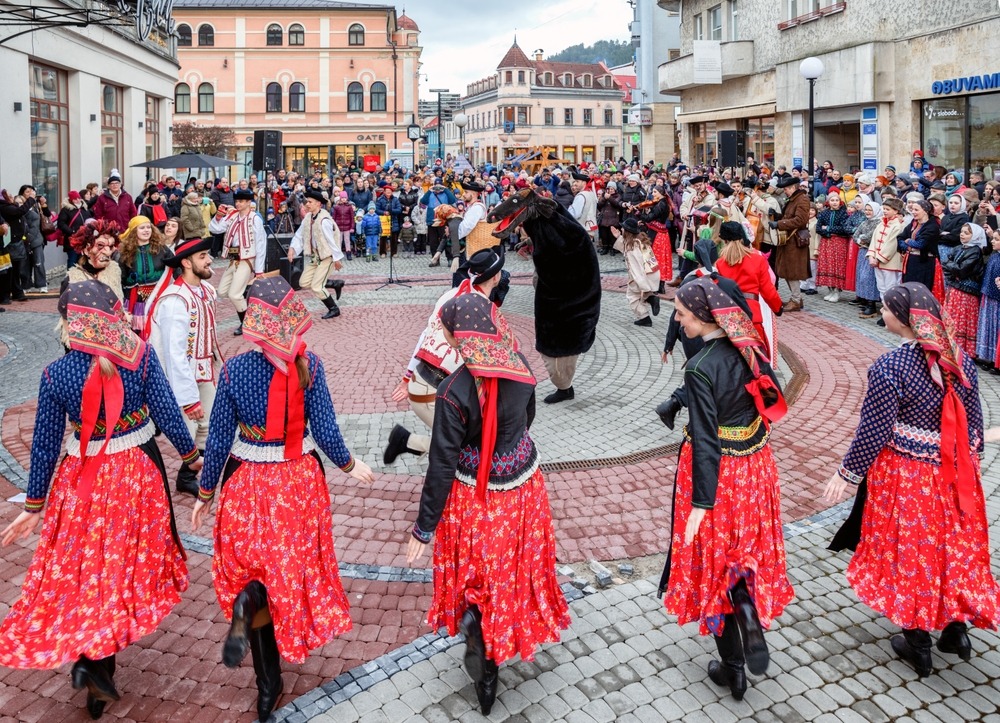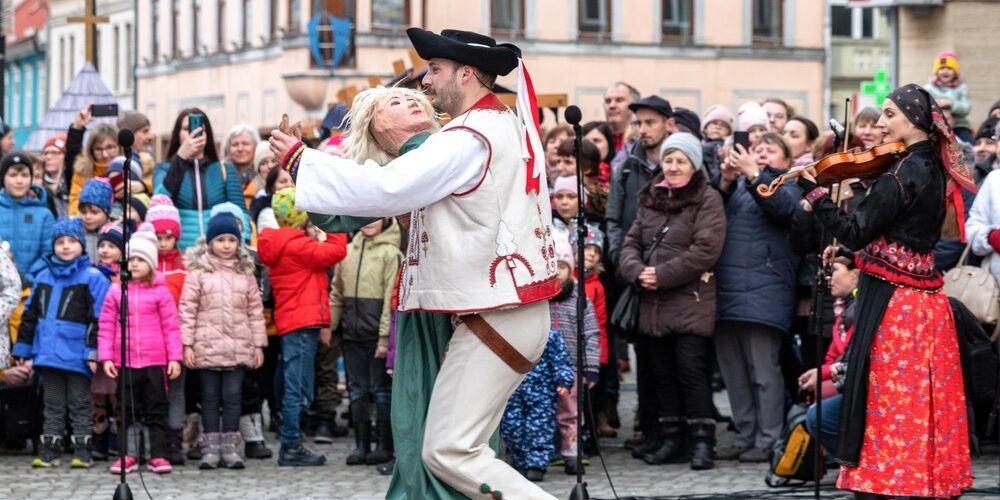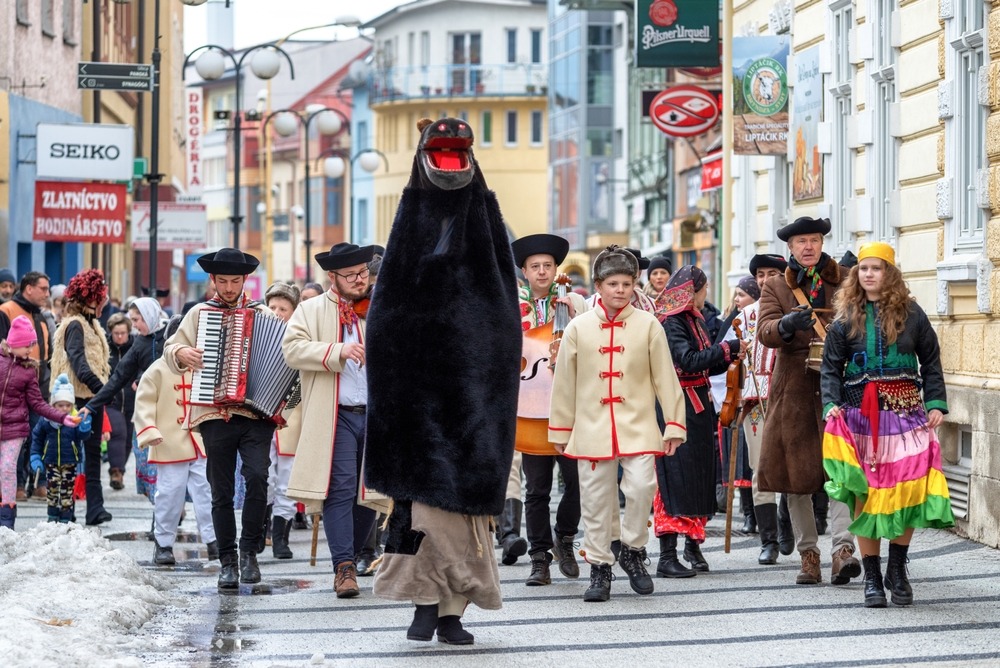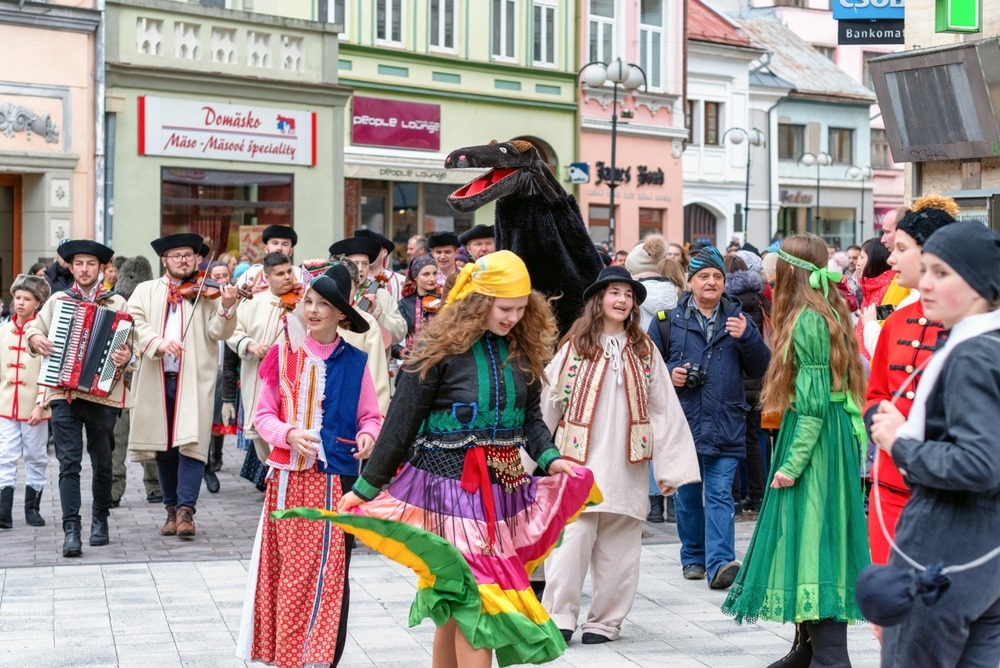Fasiangy: Slovakia’s Carnival Season and Its Rich Cultural Legacy
Fasiangy, Slovakia’s carnival season, is a vibrant celebration marking the end of winter and welcoming the coming spring. This centuries-old festival, filled with lively music, colorful costumes, and elaborate feasts, is an integral part of Slovak heritage. The season starts after Epiphany (January 6) and culminates on Shrove Tuesday, or the day before Ash Wednesday, aligning with the start of Lent in the Christian calendar. Fasiangy reflects a unique blend of pagan customs and Christian traditions, evolving over time but retaining its cultural essence. This blog delves into the history, traditional customs, and modern celebrations of Fasiangy in Slovakia.
Historical Origins of Fasiangy
Fasiangy has ancient roots, believed to have originated from pagan rituals celebrating the end of winter and the rejuvenation of nature. Long before Christianity arrived in Slovakia, people held ceremonies to honor gods associated with fertility, harvest, and the seasonal cycle of life and death. These rituals were held to appease spirits, invoke blessings for bountiful harvests, and ward off the hardships of winter. With the spread of Christianity in Slovakia, these pagan celebrations gradually blended with Christian practices, shaping the Fasiangy traditions celebrated today. The incorporation of Fasiangy into the Christian calendar transformed the event into a period of revelry and indulgence before the solemn season of Lent. The season became known for its vibrant feasts, dances, and rituals, where Slovaks celebrated life’s abundance before embarking on the 40 days of fasting and reflection.
Traditional Fasiangy Customs and Celebrations
Traditional Fasiangy customs are characterized by community gatherings, symbolic rituals, and elaborate costumes. Each region in Slovakia has its unique way of celebrating, but several themes and practices are common across the country.
Costumes and Masks
Costumes and masks are an iconic part of Fasiangy, symbolizing transformation and protection from evil spirits. Traditionally, participants wore animal masks, particularly representing goats, bears, horses, and devils. These masks were believed to ward off malevolent forces and ensure a prosperous new season. Men and women would often cross-dress to add an element of mischief, with men dressing as brides or grandmothers and women as soldiers or farmers. Some costumes represent allegorical characters such as “Death” or “Winter,” which would be symbolically “driven out” or “defeated” as part of the festivities. These characters perform dances and engage in humorous skits, bringing laughter and excitement to the village.
Parades and Processions
Traditional Fasiangy celebrations often include parades and processions, where groups of villagers roam from house to house in costume, playing music, singing, and dancing. The participants are usually accompanied by local musicians, who play folk instruments like fiddles, accordions, and bagpipes. This roving band of revelers is often rewarded with gifts of food, wine, or money. The Bear Parade is one of the most notable processions, where a person dressed as a bear (often symbolizing strength and endurance) leads the parade. This “bear” would interact with people, dancing and entertaining the crowd while symbolizing the release of nature’s vitality as winter ends.
The Slaughter of the Pig (Zabíjačka)
One of the most significant Fasiangy traditions in rural Slovakia is the zabíjačka, or the pig slaughter. Villagers gather for the communal butchering of a pig, a practice that reflects the agrarian lifestyle of Slovak villages. The meat is then used to prepare traditional delicacies like sausages, blood pudding, smoked ham, and jaternice (a type of pork sausage). This communal activity is a major social event, with families and neighbors coming together to cook, eat, and share food in preparation for Lent. The zabíjačka serves not only as a culinary tradition but also as a time for people to strengthen community bonds.
Dancing and Music

Fasiangy celebrations are incomplete without traditional Slovak dancing and folk music. Villages hold lively dances known as “fasiangové zábavy,” where people of all ages participate, often dressed in traditional costumes. Musicians play folk tunes, and everyone joins in, celebrating the spirit of togetherness and joy. Each region has its own unique dance styles and music, with traditional dances often characterized by fast rhythms and energetic movements. The music, an integral part of Fasiangy, typically includes violins, cymbaloms, and accordions, creating an infectious atmosphere that draws everyone to the dance floor.
Feasting and Culinary Traditions
Fasiangy is also known for its indulgent feasts before the restrictions of Lent. Traditional foods include šišky (sweet fried donuts), fánky (crispy pastries), and klobásy (sausages). These treats, often high in fat and sugar, are symbolic of the indulgence and merriment that Fasiangy encourages. Families prepare large quantities of food, including roasts, pastries, and homemade bread, ensuring an abundance of sustenance and enjoyment. Local beverages like homemade plum brandy (slivovica) and beer are also popular, contributing to the festive and carefree atmosphere.
Fasiangy Celebrations Today
While modern Fasiangy celebrations retain many of the traditional customs, urbanization and globalization have influenced how this festival is observed in contemporary Slovakia. Many young Slovaks, who may live far from their hometowns, return to their villages during Fasiangy to participate in the customs and reconnect with their roots. In larger cities, local cultural organizations organize events to keep the traditions alive for urban dwellers.
Organized Parades and Costume Contests
In towns and cities, Fasiangy parades and costume contests are organized for families and children, who dress up in costumes representing traditional and modern themes. While animal and devil masks remain popular, contemporary costumes have also made their way into these celebrations, allowing participants to blend old and new. Cultural centers and schools organize parades where children are encouraged to wear traditional costumes and perform folk dances. This adaptation helps teach younger generations about their heritage and the significance of Fasiangy customs.
Modern Adaptations of Zabíjačka
In contemporary Slovakia, not all communities participate in the traditional pig slaughter due to changing dietary habits, urban lifestyles, and ethical considerations. However, in villages and rural towns, the zabíjačka tradition remains popular, albeit with some modifications to accommodate modern practices. Some regions organize public zabíjačka events where visitors can sample traditional pork products, attend cooking demonstrations, and participate in butchery workshops. These events attract food enthusiasts and tourists eager to experience authentic Slovak culinary traditions.
Festivals and Folk Shows
Throughout Slovakia, various cultural festivals and folk shows are held during the Fasiangy season. These festivals often showcase traditional music, dance, and handicrafts, drawing locals and tourists alike. Performances by folk ensembles and workshops on mask-making and dancing provide a hands-on experience for people wanting to immerse themselves in the Fasiangy spirit. Some cities host special Fasiangy-themed events in museums or community centers, where exhibits feature traditional costumes, photographs, and artifacts from past celebrations. These events allow Slovaks to appreciate the cultural and historical significance of Fasiangy, even if they don’t participate in the village-style festivities.
Food Fairs and Gastronomic Celebrations
Modern Fasiangy celebrations often include food fairs and markets offering traditional Slovak dishes. These markets showcase local delicacies, like šišky, klobásy, and smoked meats, along with handmade sweets and pastries that are unique to the season. Urban food festivals celebrating Fasiangy attract locals and tourists, providing an opportunity to taste Slovakia’s culinary heritage. Local breweries and distilleries participate, offering beverages like slivovica, mead, and craft beers, making it a well-rounded gastronomic experience.
The Significance of Fasiangy in Modern Slovak Culture
Fasiangy remains a cherished celebration in Slovakia, connecting generations through shared traditions and cultural pride. In many ways, it is the Slovakian take on Mardi Gras with a broad and more rich history. It is a period of joyful festivities, rooted in Slovak heritage, that emphasizes unity, abundance, and the promise of a new season. In a rapidly changing world, Fasiangy has adapted to modern lifestyles while preserving its historical customs and values. Whether celebrated in the heart of a bustling city or in the quiet of a rural village, Fasiangy’s spirit endures, bridging the past with the present. For Slovaks, Fasiangy is not just a festival; it’s an opportunity to reconnect with family, friends, and the customs that have shaped their national identity. As the laughter of masked revelers echoes through village streets and city squares alike, Fasiangy continues to bring people together, reminding them of their roots and their collective joy in the celebration of life.




































